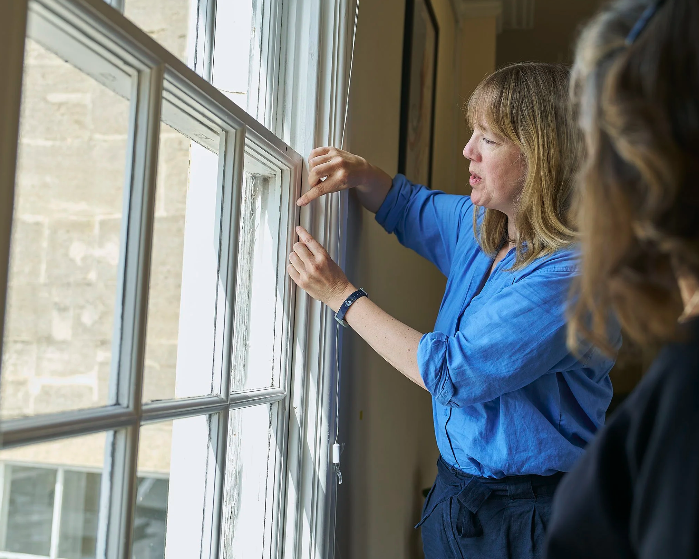Bringing heritage homes into the future
People Powered Retrofit upgrade their Home Retrofit Planner tool to accelerate responsible retrofit across heritage homes
People Powered Retrofit have significantly enhanced their Home Retrofit Planner assessment tool. The upgraded software includes listed building consent considerations and ‘upfront’ carbon impacts of materials, such as those related to manufacture and transport, helping users plan more responsible and climate conscious upgrades.
These improvements come as part of Phase 1 of the Green Heritage Homes project, which aims to tackle one of the UK’s biggest retrofit challenges: upgrading historic homes to be warm, energy efficient and low carbon without compromising their character.
This work, delivered in partnership with Bath & North East Somerset Council, Bath Preservation Trust, the Centre for Sustainable Energy and People Powered Retrofit and led by Bath & West Community Energy (BWCE), was funded through the UK Government’s Local Energy Advice Demonstrator (LEAD) programme via the South West Net Zero Hub. Together, the project partners are helping to make high-quality, heritage-sensitive retrofit more accessible to householders, advisors and planners alike - making sure the homes people love today are ready for the zero-carbon future.

Transforming retrofit planning for traditional buildings
The Green Heritage Homes project has driven major new improvements in the functionality of Home Retrofit Planner. These focus on two critical areas: heritage-specific guidance and carbon impact reporting - both designed to make retrofit planning more transparent, holistic and climate aware:
Integrated support for listed buildings
The tool now provides enhanced guidance for buildings identified as listed or located within Conservation Areas, with a focus on historic significance and the requirements for gaining consent. This advice has been fully integrated into both the standard measures library and the tool’s client facing reporting. It gives advisors and homeowners clearer, more accessible information to support decision making that aligns with legal obligations and best practices.
In parallel, the measures library has been updated to include more detailed technical advice relevant to traditional construction, such as guidance on historic glazing and the use of various materials.
Comprehensive carbon analysis
Home Retrofit Planner now includes a dual-layered approach to carbon impact:
‘Upfront’ carbon reporting: Users are now presented with estimates of the carbon emissions associated with the manufacture, transport and installation of individual retrofit materials and components. This data - often overlooked in retrofit planning - provides a clearer view of the ‘upfront carbon cost’ of each upgrade, tailored to the retrofit context.
Operational carbon analysis: Reporting on the energy-related carbon savings of retrofit measures has also been upgraded. The tool now includes projections that reflect the planned decarbonisation of the national grid, resulting in more accurate modelling of a home’s future emissions profile.
Factsheet: As part of this work, a dedicated carbon factsheet has been produced to help householders and retrofit advisors understand the full carbon picture of common retrofit measures - from both upfront material emissions and embodied carbon to long-term operational savings. It presents data on carbon savings, payback periods and material impacts over a 20 year period, offering practical guidance on which interventions deliver the greatest climate benefit. The factsheet also explains key concepts like biogenic carbon and compares the carbon profiles of typical insulation materials - supporting more informed, low carbon decision making in home retrofit.
Combined, these two strands of data create a much richer picture of total carbon impact over time. Clients can now identify which measures deliver the greatest overall climate benefit - not only in terms of reduced energy use, but also through smart material choices.
Looking ahead
With Phase 1 complete, the project partners are already exploring how this work can be expanded and embedded more widely. Priorities include deepening community engagement, strengthening advisor training and supporting local authorities and community energy groups to apply the tool at scale.
In the Bath area, we have lots of listed buildings. We are thrilled to be able to offer listed building homeowners an energy survey that takes into account heritage protection and listed building consent considerations. And, the inclusion of upfront carbon will not only help broaden the conversation about how to tackle the climate crisis through retrofit, but also encourage the use of natural materials that are better for the planet in other ways.